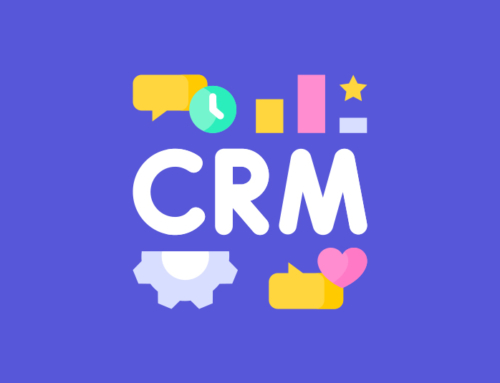Over the course of a project, you will make hundreds of decisions. However, one of the first choices you must make is to determine which project management methodology you should follow.
When it comes to project and team management, methodologies like Agile and frameworks like Scrum dominate the conversation.
These are the buzzwords that come up the most when the subject is agile methodologies. But do you know what the differences are between these two methods?
This article will cover the definitions of Agile and Scrum. We will tackle the advantages, differences, and how to implement each one. Continue reading to learn in depth about these practices and why you should adopt them to optimize your business!

Agile Methodology
Agile software development refers to a group of software development methodologies based on iterative development, where requirements and solutions evolve through collaboration among self-organized, cross-functional teams.
Agile methods generally promote a disciplined project management process that encourages frequent inspection and adaptation. Their leadership philosophy encourages teamwork, self-organization, and accountability, a set of engineering best practices designed to enable rapid delivery of high-quality software, and a business approach that aligns development with customer needs and company goals.
Agile development refers to any development process that is aligned with the concepts of the Agile Manifesto. The Manifesto was developed by a group of fourteen leading figures in the software industry and reflects their experience regarding what approaches work or don’t work for software development.
Advantages of Agile Methodology for your Business
First, let’s reflect quickly: is it beneficial to create and maintain an Agile Culture in your business?
The development of an Agile Culture is becoming more and more fundamental. It is required by the very dynamics of the market, where employees, customers, suppliers, and business partners want fast and efficient solutions.
The Agile methodology offers the following advantages:
Change is accepted: With shorter planning cycles, it is easy to accommodate and accept changes at any time during the project. There is always an opportunity to refine and reprioritize.
The end goal may be unknown: Agile is very beneficial for projects where the end goal is not clearly defined. As the project progresses, the goals will come to light and development can easily adapt to these evolving requirements.
Faster, high-quality delivery: Subdividing the project into iterations (manageable units) allows the team to focus on high-quality development, testing, and collaboration. Testing during each iteration allows bugs to be identified and fixed quickly. Software can be delivered faster with consistent, successive iterations.
Strong team collaboration: Agile emphasizes the importance of frequent communication and face-to-face interactions. Teams work together and individuals can take responsibility for different parts of projects.
Continuous improvement: Agile projects encourage feedback from users and team members throughout the project, so lessons learned are used to improve future iterations.

Scrum
Scrum, on the other hand, is a subset of Agile. A Scrum is a simple and flexible Agile methodology for software development. It is not a technique or a process, but a lightweight and simple framework for solving complex project problems and delivering a high-value product in a creative way.
The framework simplifies how companies develop and maintain products in a complex with dynamic environments. Scrum may be the answer to rapidly developing a technology industry that adapts to rapidly changing customer demands.
Scrum divides time-limited work periods for the development cycle, so-called sprints, which usually last a week. Project managers plan the initiatives that will be executed in the sprints. The team holds daily meetings to check on the progress of the project. In Scrum, there are at least three prescribed roles:
The Product Owner: the occupant of this role is responsible for initial planning, task prioritization, and communication.
The Scrum Master: responsible for overseeing the process during the sprint.
Team Members: individuals who perform the tasks in the sprint.
The advantages of Scrum for your business:
Scrum is a highly prescriptive system with specific roles and ceremonies. While it may take some time to implement, these rules have many advantages. Benefits of Scrum include:
More project transparency and visibility: With daily meetings, the entire team knows who is doing what, eliminating many misunderstandings. Issues are identified early, allowing the team to resolve them before they get out of hand.
Increased team accountability: There is no project manager telling the Scrum team what to do and when. Instead, the team collectively decides what work it can complete in each sprint. Everyone works together, improving collaboration and empowering each team member to be independent.
Cost savings: Constant communication ensures that the team is aware of all issues and changes as soon as they arise, helping to decrease expenses and increase quality. By coding and testing features in smaller chunks, there is continuous feedback, and errors can be corrected early, before they become too expensive to fix.
Easy to accommodate change: With short sprints and constant feedback, it is easier to handle change. For example, if the team receives new user feedback during one sprint, they can easily add that feature in the next sprint.

The difference between Agile and Scrum
On the surface, it is easy to see why Agile and Scrum can often be confused, as both rely on an iterative process, frequent interaction with the customer, and collaborative decision-making. The main difference between Agile and Scrum is that while Agile is a project management philosophy that uses a core set of values or principles, Scrum is a specific Agile methodology that is used to facilitate a project. In other words, Agile is a philosophy, while Scrum is a type of Agile methodology.
How to implement Agile Methodology in your company:
Start with planning
You can start implementing the Agile methodology in stages or all at once, but the important thing is that there is planning, with analysis of the team that will lead this practice and also the company’s expectations and business goals. The good news is that it is possible to change the path any time it is necessary. Planning, therefore, is not immutable, but a way to prepare and analyze the possibilities.
Promote company alignment
Promoting alignment is essential for everyone to understand the value and motivators of change. All change is complex and generates insecurities. Alignment must be integral. From the Agile team to all departments in the company for the implementation of the Agile methodology to be successful. Creating the right expectations is key.
Choose the right tool
The right project management tool is critical to the success of any business. Do you want to apply the concepts of the Agile methodology in your company? How about having one of the most flexible management tools in the market?
Airdesk is a collaboration platform designed to give companies a 360-degree view of their business operations. Inspired by methods such as Scrum and Agile, the platform includes process automation to ensure that every part of the business is running smoothly.
Airdesk allows you to centralize tasks and processes, optimizing productivity, and reducing costs. The platform is perfect for all teams, whether they work on-site or remotely. By giving team members access to all the right tools to work smarter, Airdesk empowers businesses and helps them grow.
Were you familiar with these two project management methods? Follow our blog to stay up to date with all our news and productivity tips!







